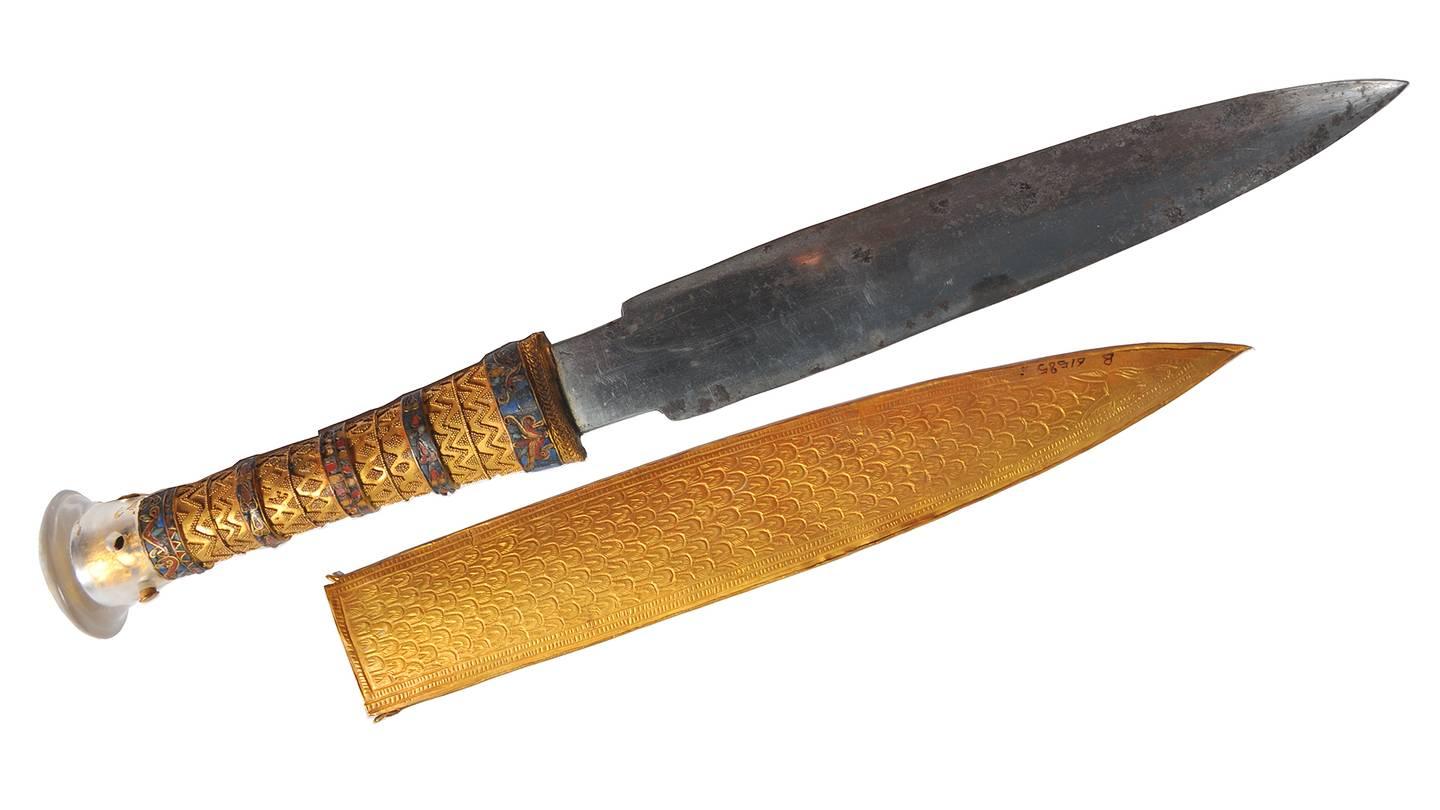Of the many wonderful things that Howard Carter found in the tomb of Tutankhamun in 1922, a small iron dagger may seem insignificant compared to the numerous gold, silver, and beautifully colored objects that the Egyptian boy king is famous for. But to the corrosionist, this item is remarkable because it just may be the oldest intact iron artifact known.

The iron dagger, ~340-mm long with a gold handle, was found in the sarcophagus of the ancient king, who was buried in 1320 B.C. Researchers from the University of Pisa (Pisa, Italy) and other establishments in Italy, and the Museum of Egyptian Antiquities (Cairo, Egypt) recently analyzed the blade using nondestructive x-ray fluorescence and found that the composition was of meteoritic iron with ~10% nickel and 0.6% cobalt.1.
Ancient peoples used meteorite iron for various tools, weapons, and jewelry, although this dagger shows a high degree of metalworking skill and is probably the finest example of its type. Despite being buried for King Tut’s Meteoric Treasure nearly 3,300 years, the blade is in excellent condition, with only minor evidence of corrosion.
The surface is not completely smooth or clean, but analysis of the surface contamination has not been reported. There are several possible causes for this surface stain. Iron meteorites are not completely metallic, and there may have been nonmetallic silicate or other inclusions. The method of iron working is unknown, but heating and forging may have embedded charcoal or other impurities in the surface. Finally, the dagger was actually in the sarcophagus next to the mummified body. Mummification involved packing the body with natron (a rock salt material) to desiccate the body, and this corrosive material along with bodily fluids may have caused some initial corrosion before complete drying took place. Any or all of these factors may be responsible for the surface defects.
While ~10% nickel content somewhat reduces the corrosion rate of iron compared to mild steel, the meteoritic iron would still be expected to behave similarly to modern steels. If exposed to the atmosphere or soil, even in an environment as arid as that in Egypt, little if any of the original metal would be left. An ancient meteoric iron dagger found at Alacahöyük in Turkey, admittedly 1,000 years older than the one found in Tutankhamun’s tomb, no longer contains any metallic iron. X-ray investigations show this artifact has completely rusted away, although the gold hilt is still intact. It is not the nickel in the iron that allowed King Tut’s dagger to remain intact, but rather the very dry conditions in the tomb.
Egyptian tombs were completely sealed once the complex embalming and funeral process was completed. Any moisture would quickly react with wood or other content on the tomb and the air would remain completely dry. It would stay dry while the tomb remained undisturbed, preventing not only damage to the iron dagger, but to wood and other organic items. Sadly, the humidity from visits from the many tourists that have passed through the tomb since it opened has caused the remaining items and wall murals to become damaged. The Egyptian Museum occasionally sends some of Tutankhamun’s treasures to overseas museums for special displays, and include a gold dagger. The iron dagger, however, stays in Cairo—it is too valuable to move.
Around the time of King Tut, the ancient Anatolian people in what is now eastern Turkey were making what is one of the most important discoveries in technological history. They discovered the difficult process of smelting iron from its ore, and the Iron Age was born. Again, most of the iron produced has since rusted away, but there are examples of ancient man-made iron still surviving that can show us how it is possible to defeat corrosion.
Reference
1 Daniela Comelli, et al., “The Meteoritic Origin of Tutankhamun’s Iron Dagger Blade,” Meteoritics & Planetary Science 51, 7 (2016): pp. 1,301-1,309.
For more information about Discovering King Tutankhamun’s tomb and photos the BBC have a great article